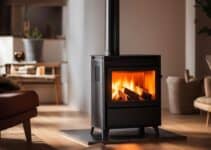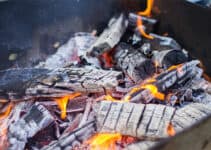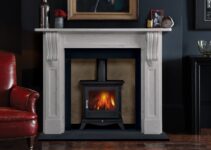As the evenings draw in and the thermometer drops, we’ll all want to snuggle up in front of our log burners. It should be a comfortable experience so you definitely don’t want to be worrying about that crack in your log burner glass.
But why has my log burner glass cracked? This can be for a number of reasons, most commonly its overfiring, impact from oversized logs, wear and tear over time or accidental damage.
Finding out why your log burner glass has cracked may help prevent it from happening again. This could save you time and money that could be better spent on fuel for your burner to keep you warm and toasty.

What Causes a Wood-Burning Stove to Crack?
Wood burners come in all shapes and sizes and the one thing that differs in most is the size of the glass. Design-wise showing off the blazing logs in the wood burner is very much a matter of taste but many have quite a large glass pane.
But while there are a number of woodburning stove designs, most burners share very similar functionality. This makes it a bit easier to diagnose why the log burner glass is broken. And there are a few main reasons:
1. Overfiring
You’re burning fuel that can reach very high temperatures. Yes, wood burners are designed to take the heat but they’re not going to function properly when over-heated.
When you put too much fuel into your log burner’s firebox, the resulting extra heat can crack the glass.
Burning household coal in a log burner could also crack the glass. They’re not designed for the higher temperature that coal burns at and as there is no air circulating from below, the temperature soars.
Another way coal can damage your log burner glass is through explosions of the gas pockets contained in coal which might cause a pressure crack. Stick to the fuel your log burner is designed for – the clue is in the name.
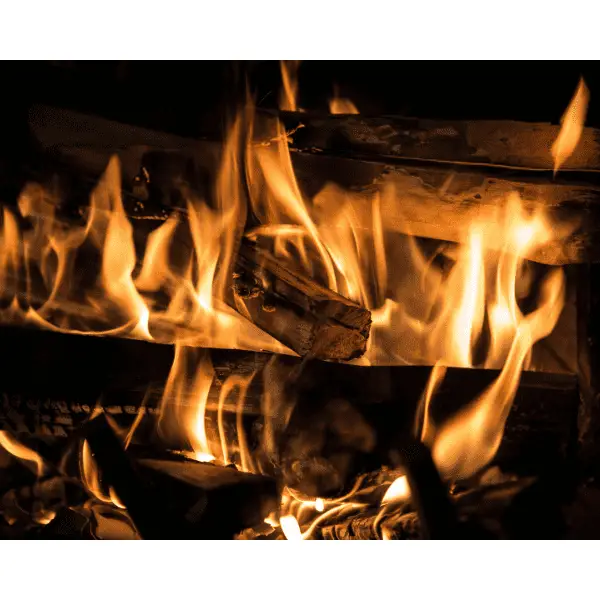
2. Impact
If you squeeze big logs into your wood burner – that’s a sure-fire way of damaging the glass. The pressure of oversized or poorly laid logs against your log burner’s glass could certainly crack it.
And, like everything, wood expands on being heated, so big logs could expand and crack your glass even if you haven’t squeezed them directly against the glass.
Something large and heavy hitting your wood burner’s glass from the outside is going to have a damaging effect in some way. It may crack it directly or create a weakness in the glass which might crack later when heated.
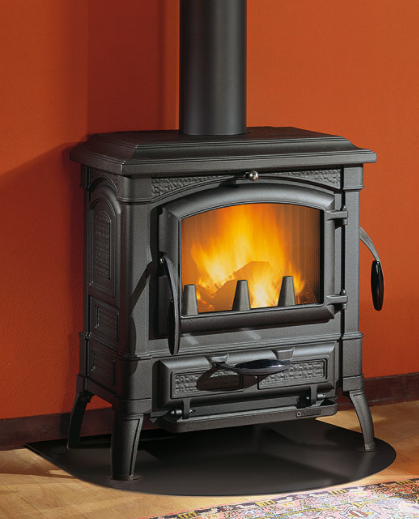
3. Wear and Tear
The screw or clips that hold the wood burner glass in place can get corroded or stretched over time. This could mean your glass might slip and crack, or fall out of the door entirely causing it to shatter.
On the flip side, if you overtighten screws or clips it can have the same effect. The wood burner glass will expand slightly on being heated and an over-tightened screw might cause a fracture in the glass that will only worsen over time with the process of heating and cooling.
4. Accidental Damage
Accidents happen. And there are so many ways that our wood burner glass could become cracked.
For example, if cold liquid is spilled on hot glass there’ll be a risk of it cracking or if you live in an area where there are earthquakes or any sort of ground movement, the shift can affect the alignment of your log burner resulting in the glass cracking.
The list for accidental damage goes on and on, and we’re sure there have been some other interesting and obscure reasons for a log burner door cracking. Glass is breakable and won’t last forever so it’s always good to be prepared to replace it at some stage in your log burner’s life.
Can I Use My Log Burner With Cracked Glass?
The short answer to this question is: no.
The longer answer is also no but we’ll explain why:
Fundamentally, the stove has been designed and built to generate heat in a specific way. The flow of air is controlled and allowed to circulate above the logs in the burner. This is because logs do not need airflow from below, like coal.
A wood burner also conducts the noxious gases through the flue so that they can vent externally. The glass is there so you can see the action of the burning and feel its beneficial qualities without losing any of this function. In other words, you get a cosy fire without choking on fumes.
If the wood burner glass is cracked, it could lead to the unnatural ingress of air into the burner which will disrupt its efficiency.
A crack could lead to the glass shattering entirely or falling out which could allow sparks or debris to fall out and start a fire.
While carbon monoxide poisoning through a faulty log burner is rare, it’s still a possibility. If your log burner’s glass is cracked or broken, small amounts of this toxic gas could escape into your room and can have severe or fatal health consequences if your room or home is not well-ventilated.
Can You Replace Cracked Glass in a Wood Burning Stove?
Luckily, replacing the glass on log burners is a relatively simple process. Depending on the size and model of your wood burner, it can also be done relatively cheaply, too.
For peace of mind, it is always worth having an experienced and certified installer complete the glass replacement for your burner. The glass is an essential part of your burner and to keep it running smoothly for a lifetime, it’s worth investing in a specialist.
HETAS, the regulatory association for solid fuel, have a handy installer finder to locate a local approved fitter.
Log Burner Glass Replacement
You can also replace the glass in your log burner yourself in 5 simple steps:
1. Cleaning the door of your wood burner to make it easier to remove and reattach.
2. Remove the entire door of your log burner to make the process easier and safer.
3. Unscrew, unclip and unseal the cracked glass from the door.
4. Replace the glass and screw, clip and seal into place.
5. Re-hang the log burner door.
It goes without saying that you should wear protective clothing, including gloves and goggles during this process.
How to Repair Broken Fireplace Glass
While it might seem a more economic strategy to repair a hairline crack in your log burner glass, it is not recommended.
It is possible to repair single-paned glass with non-toxic epoxy, but the ceramic glass that is used in log burner doors will not respond in the same way. Safety most definitely comes first with log burners and their glass doors are no exception.
You don’t want to risk the glass suddenly shattering or falling out when it is unattended – it could start a devastating house fire. As soon as you see a crack, replace the glass panel.
How to Prevent the Glass in your Log Burner from Cracking
Prevention is much better than a cure and here are some easy-to-follow tips to keep your log burner glass in tip-top shape:
- Use the correct fuel for your burner – coal burns hotter and could be a risk to your glass so don’t use it.
- Use logs that are cut to fit but have room to expand slightly. Wood expands slightly when heated and can put pressure on the glass door which can cause damage.
- Take care when loading fuel into your wood burner. Make sure the logs can’t roll and risk damage to the glass. And don’t be tempted to squeeze in too many logs or logs that are too large which could damage the glass.
- Keep the glass clean to spot any hairline fractures or cracks that do appear and to allow you to keep an eye on the contents of the stove as it burns.
- Check the seals around the glass.
- Check around the glass for rust or corrosion.
Log burners should be generally checked once a week as part of their regular maintenance so adding a quick glass clean and check, shouldn’t add to your workload too much!
Log Burner Glass Cracked
In conclusion, glass cracked on a log burner is due to various reasons. Overfiring and rapid temperature changes, commonly caused by misuse or negligence, are key factors.
Regular maintenance and cautious operation play crucial roles in preventing such incidents.
Equally important is the use of appropriate firewood and ensuring correct installation. By understanding and applying these measures, the lifespan of your log burner glass can be significantly extended.
